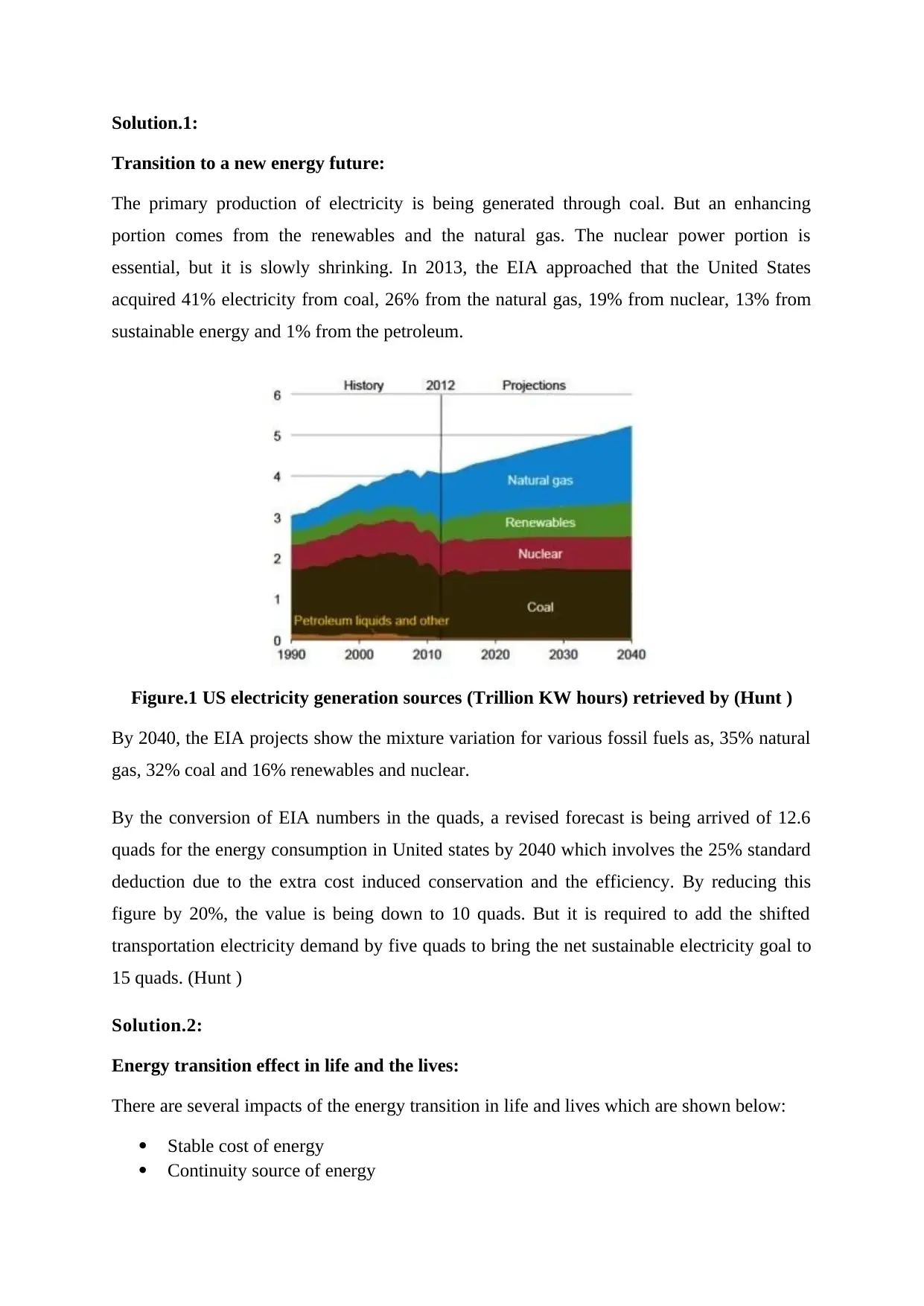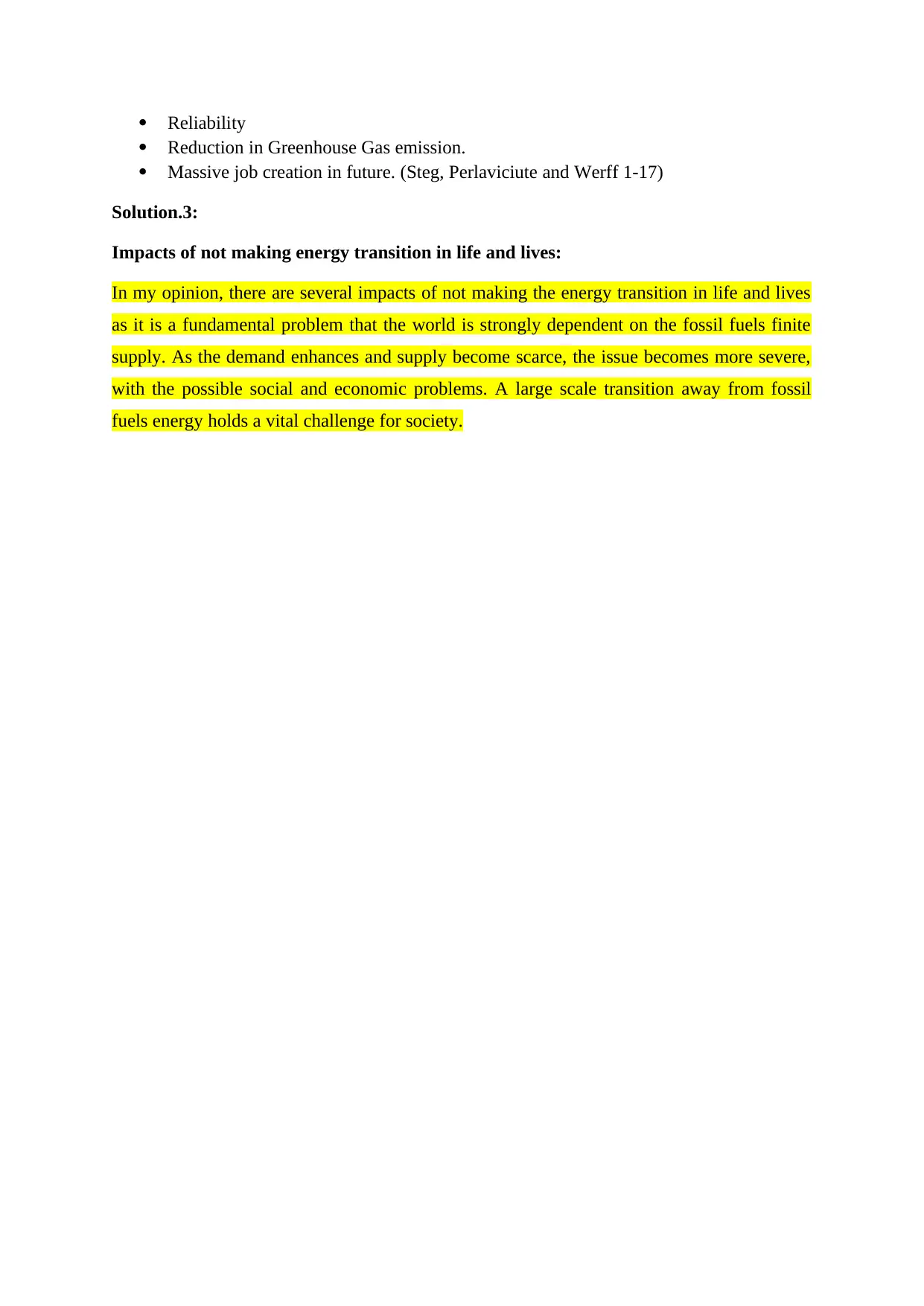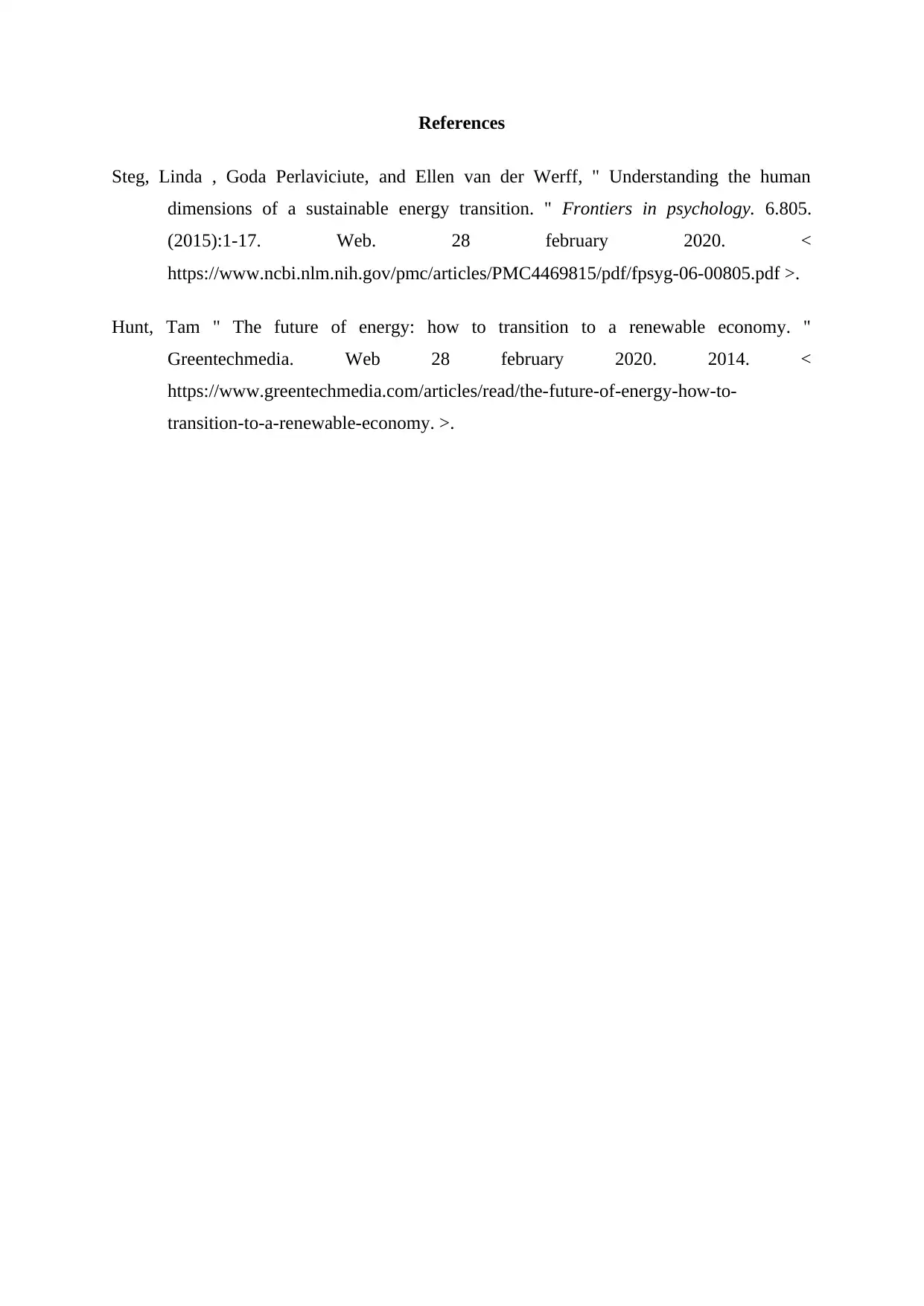Energy Transition Report: Analysis of Future Trends & Impacts on Life
VerifiedAdded on 2022/08/12
|3
|451
|17
Report
AI Summary
This report examines the transition from fossil fuels to renewable energy sources. It explores the current state of electricity generation in the United States, including the reliance on coal, natural gas, and nuclear power, and projects future trends, such as the increasing role of renewables. The report also discusses the potential impacts of this energy transition, highlighting the benefits of stable energy costs, reliable energy sources, and reduced greenhouse gas emissions. Furthermore, it addresses the consequences of failing to transition, emphasizing the challenges associated with dependence on finite fossil fuel supplies and the potential for social and economic problems. The report references key sources that support the analysis of the energy transition and its impacts on society.
1 out of 3










![[object Object]](/_next/static/media/star-bottom.7253800d.svg)